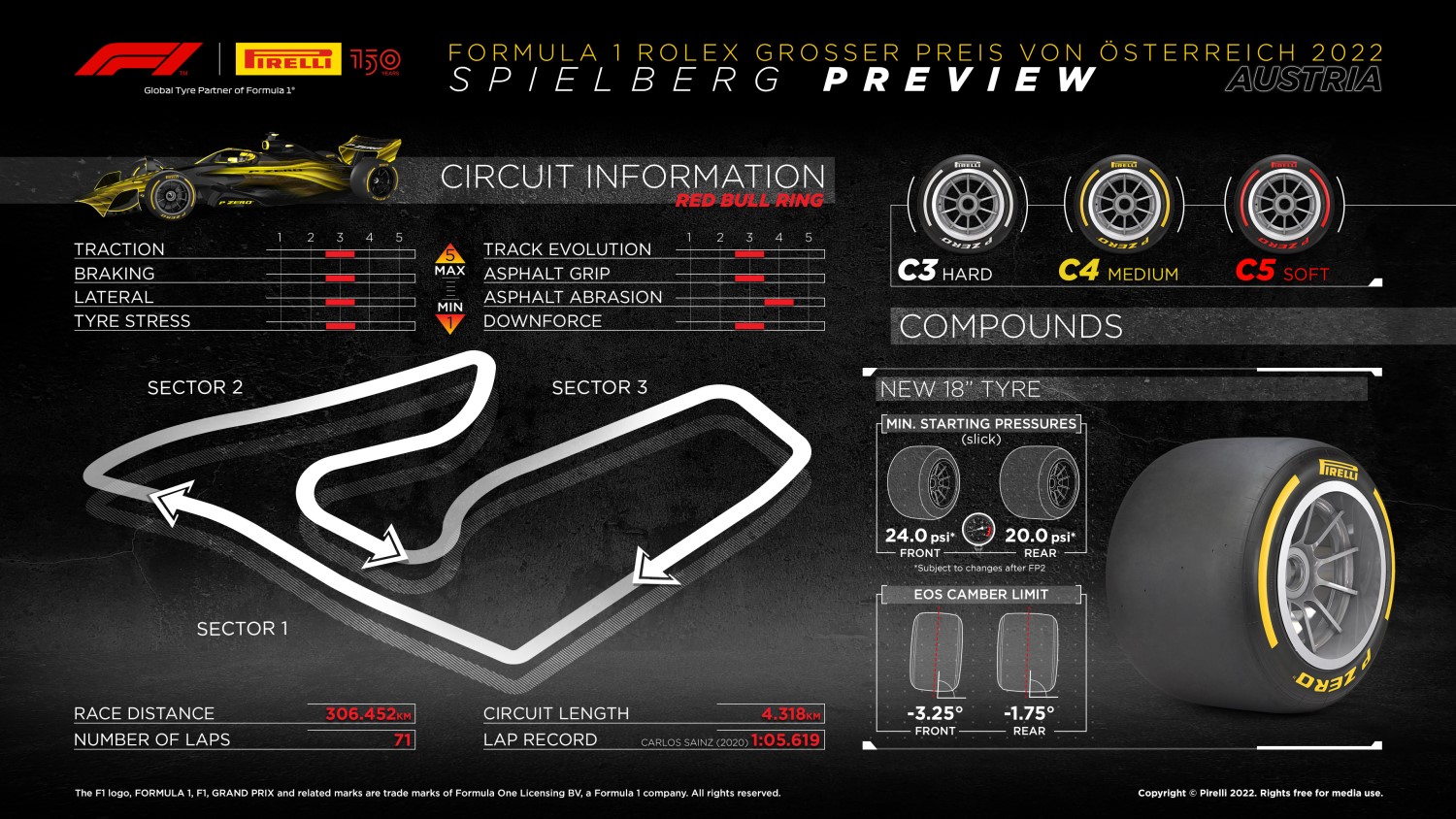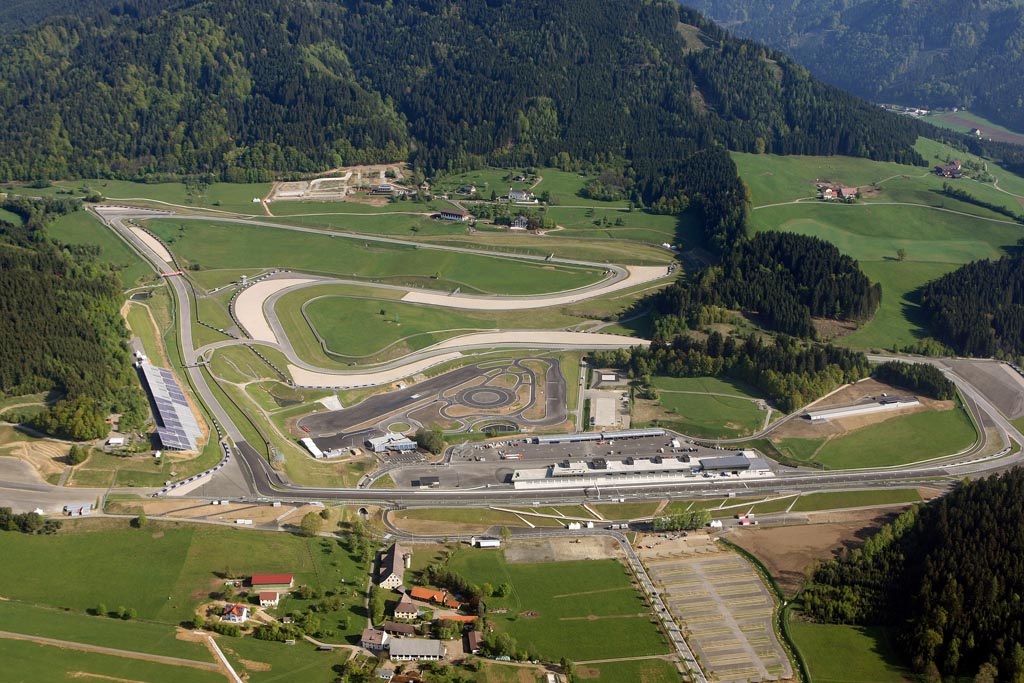F1: Austrian GP Preview
Austria first joined Formula 1’s calendar in 1964, at Zeltweg Airport, but from 1970 it moved to the newly- constructed Osterreichring in the undulating landscape above the village of Spielberg.
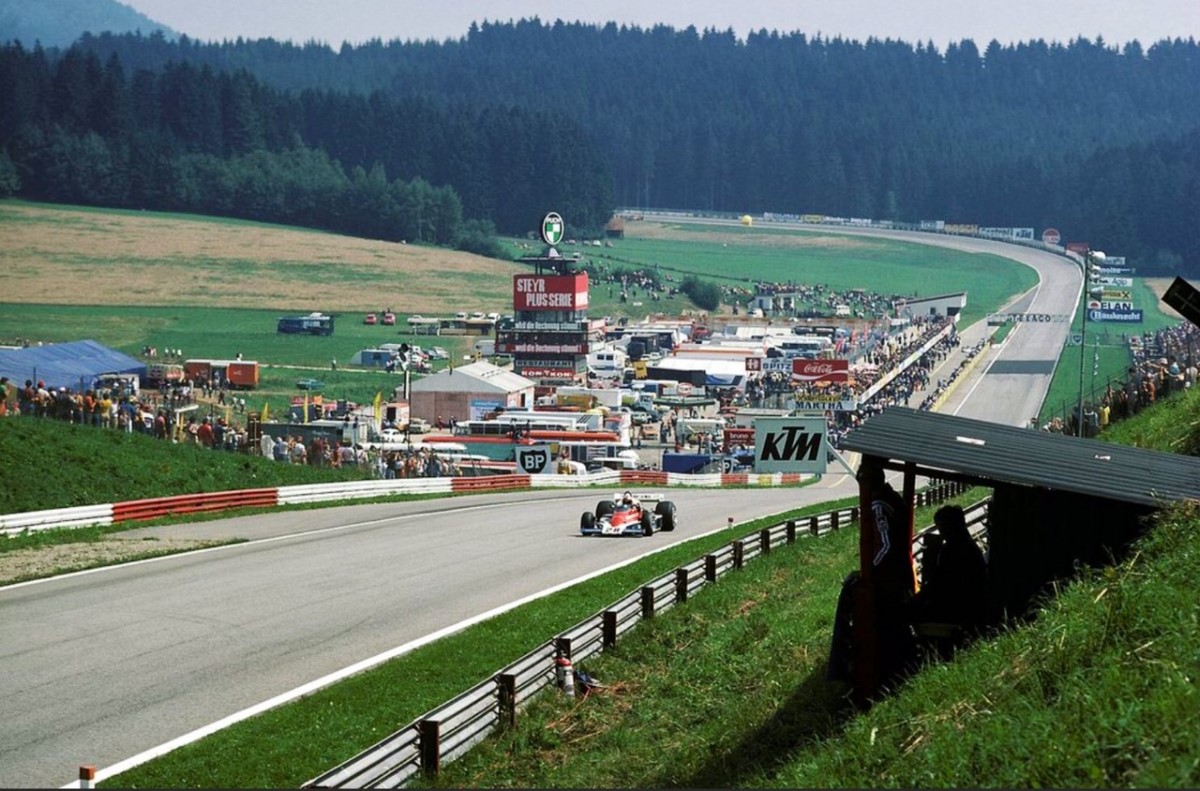
It featured until 1987 before re-appearing in truncated form, as the A1 Ring, from 1997 through 2003.
Austria’s grand prix again dropped off the schedule for over a decade, with the circuit falling into an unusable state, but after heavy funding from Red Bull it was extensively renovated – with the layout retained – and Austria’s Formula 1 event was revived in 2014.
Austria held the opening two rounds of the 2020 season, as Formula 1 grappled with the early stages of the pandemic, and once more in 2021 Spielberg stepped in to fill the void with back-to-back events.
Now, after four races in two years, Austria is back to its conventional national grand prix – though there will once more be two opportunities to do battle. That’s because F1 Sprint will return for its second of three outings this season, marking the first time the format has been run at Spielberg.
The layout of the circuit is more challenging than is perhaps apparent from the track map, with the tight low-speed corners contrasting heavily with the faster infield corners at T6/7. The significant elevation changes add to the challenge and make some of the braking zones tricky. Finally, the curbs are very tempting for the drivers, but can damage the cars if they are abused.

Just like this track, Austria is a country that mixes tradition and modernity like no other. It’s a place where the dirndl meets haute couture; where the Wienerschnitzel lives alongside fusion dining. Loving things that are done as they’ve always been doesn’t mean not appreciating the impetus coming from the new, from the exotic, from the unexpected.
Austria has an Alpine heart but retains the soul of an empire that brought together people, ethnicities, cultures. It’s a place bringing together Mozart’s Don Giovanni and Mark Ronson’s Valerie (knowing both would have appreciated Amy Winehouse). It’s both extremely classic, and extremely badass.
The weather forecast is calling for relatively cool conditions, which should make setting the cooling level ahead of qualifying more straightforward than it might have been in more usual hot conditions. Even so, setting the cooling level for the race on Friday afternoon remains a tricky risk-reward game, which all teams must face.
Weather Forecast
Friday, July 8 – Practice 1 and Sprint Qualifying weather
Conditions: Partly sunny and pleasant, with a very high UV index of 9 with NNW winds blowing at 15km/h and no probability of a thunderstorm.
Maximum temperature expected: 20°C | 60.8°F
Minimum temperature expected: 11°C | 55.4°F
Chance of rain: 25%
Saturday, July 9 – Practice 2 and Sprint Race weather
Conditions: Pleasant with clouds and sunshine, with a very high UV index of 9 and NNW winds blowing at 11 km/h with no probability of a thunderstorm.
Maximum temperature expected: 23°C | 69.8°F
Minimum temperature expected: 12°C | 50°F
Chance of rain: 1%
Sunday, July 10 – Feature Race weather
Conditions: Times of sun and clouds with a 25% chance of thunderstorms in spots with a very high UV index of 9 and NW winds blowing at 13km/h.
Maximum temperature expected: 22°C | 73.4°F
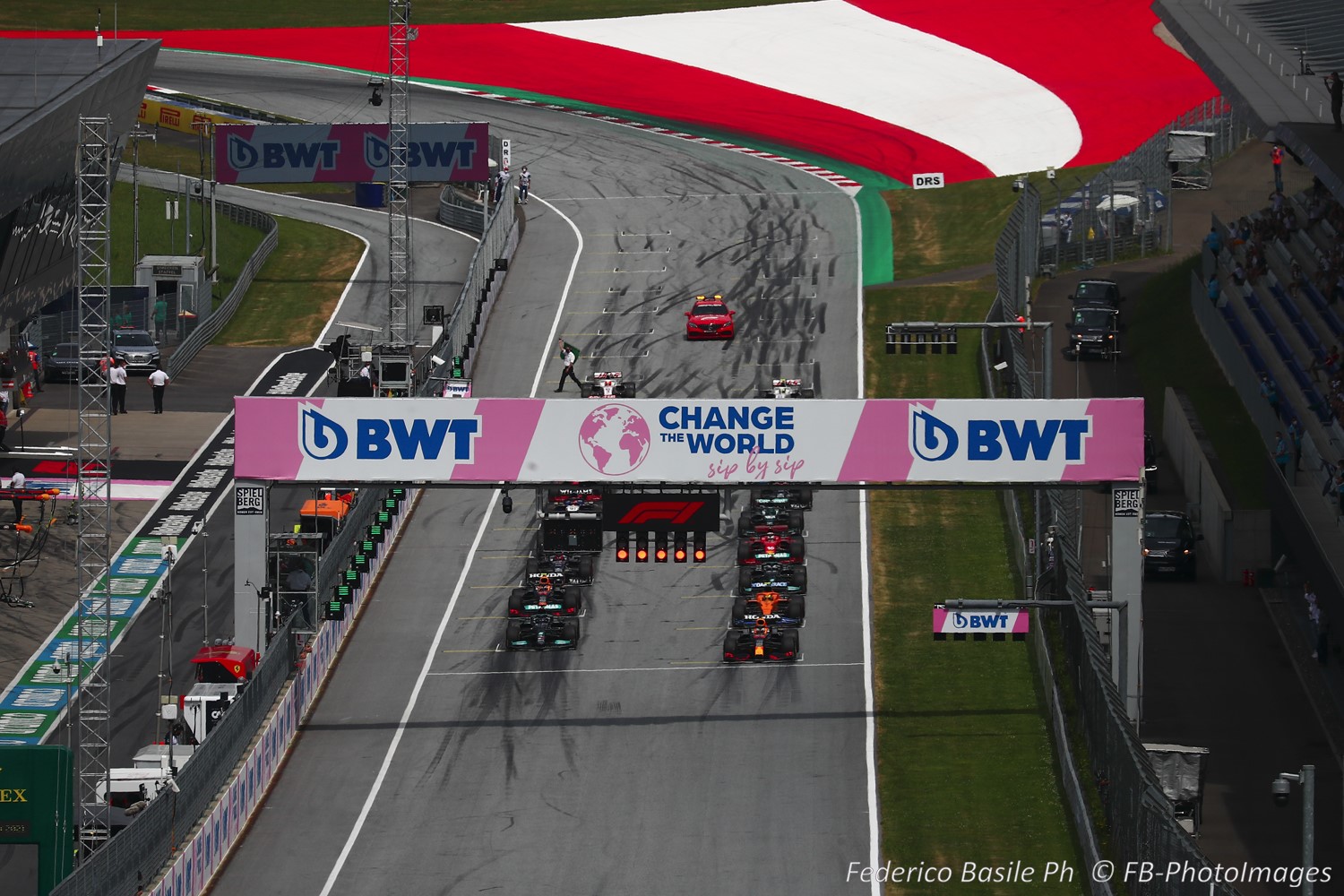
Fact File: Austrian Grand Prix
- The least amount of time needed for a lap at any of the circuits on the 2022 F1 calendar is at Spielberg. The lap record currently stands at 1:02.939 minutes, set by Valtteri Bottas in 2020. The Red Bull Ring is the fifth-shortest track in F1 at 4.13km, and only Monaco, Zandvoort, Mexico City and Interlagos are shorter. As a consequence, Spielberg regularly produces one of the closest qualifying sessions of the entire year.
- However, the short track length and fast lap times also mean that drivers can post more laps, both in the practice sessions and in qualifying – provided they have enough sets of tires.
- At Spielberg, the altitude doesn’t impact cooling the engine as much as locations such as Interlagos and Mexico City. Instead, the issues stem from the relatively short lap and the consequent lack of time to cool the system down again.
- With just ten corners, Spielberg has the fewest of any of the 22 F1 tracks. At the same time, Turns 2, 5 and 8 are taken at full throttle and are therefore not considered to be corners in the truest sense of the word.
- The track has a steep gradient from side-to-side in places, as exemplified by Turns 3 and 4 where it slopes up towards the apex as the car drives over the crest while accelerating out of the corner. This can result in one wheel leaving the ground, causing issues with braking, stability and traction.
- The Red Bull Ring is a track that puts huge demands on a car’s handling while at the same time demanding good mechanical grip at low speeds (Turns 1, 3 and 4) and excellent performance at high speed (Turns 6-7 and 9-10). Ultimately, engineers have to find a compromise when setting up the vehicle and dial in the right amount of downforce.
- Running through the penultimate corner, the very fast Turn 9, drivers are subjected to 4.7g – the sixth-highest figure seen so far this season.
- The difference in elevation of 69 meters between the lowest and highest points at the Red Bull Ring is one of the largest of the season, which is unsurprising given the track’s location in the Austrian Alps. The lowest section is on the start/finish straight, and the track reaches its highest point in Turn 3.
- The track has three very hard braking zones in succession on the approaches to Turns 1, 3 and 4, and the brakes are unable to cool down sufficiently over the rest of the track, as the lap is relatively short, which impacts the maximum pressure and general wear and tear experienced.
- For that reason, teams have to apply as much cooling as possible to the brakes, so the front tires hardly get warmed up at all, and as the outlap is very short, tires can never be properly prepared to be at their best for the start of the qualifying lap. Teams often like to post preparatory laps, which is not possible if you want to do two runs in Q3.
- The Red Bull Ring is notorious for its aggressive curbs and is considered to be one of the toughest tests for vehicle suspension. This applies especially to the curbs at the exits of T1, T6 and T7, which take an exceptionally high toll on the cars because of their frequency (i.e. the gap between the highest and lowest points of the curbs) and the speeds at which they are taken.
Unlocking the lap
The Red Bull Ring is not only the fastest lap on the calendar, it also has the fewest corners, with just 10. This makes every braking zone, apex and corner exit absolutely critical to lap-time.

Hard braking zones conclude all three DRS zones – but the nature of these three corners is very different. Turn One (named after the late Niki Lauda) is uphill and deceptively tight on exit; Turn Three is an overtaking possibility and encourages both attack and defense on entry; Turn Four is a late-apex right-hander that also creates action on both entry and exit.
Two more key corners are the pair of downhill right-handers that conclude the lap. Both are extremely fast, requiring maximum commitment and extreme accuracy – running wide can result in laps being deleted due to exceeding track limits and impacts with the large exit curbs.
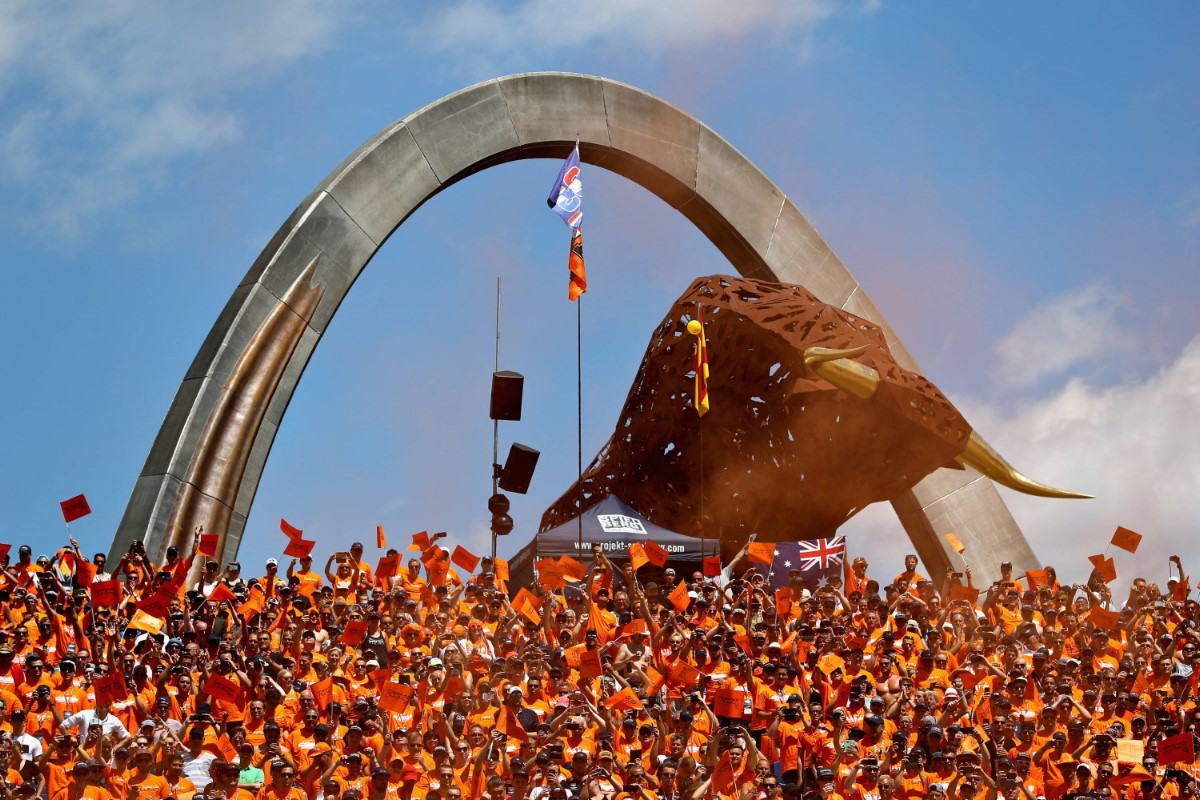
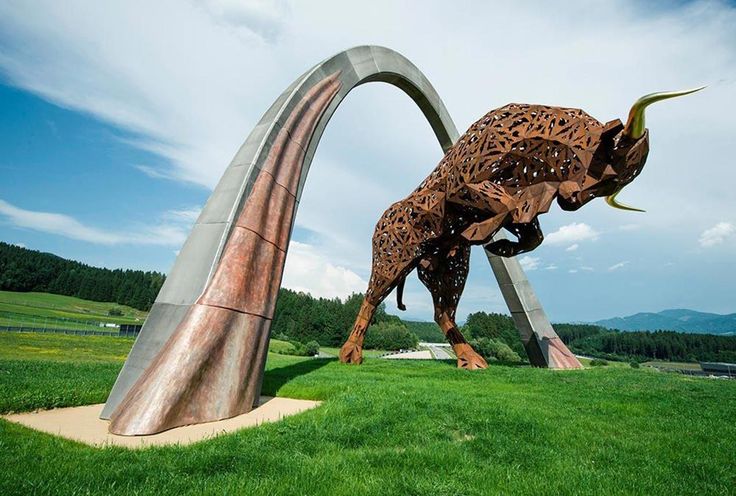
Points leader Max Verstappen on Austria
“I have a lot of good memories from racing in Austria so I’m really excited to go back.
“It’s a really interesting track with not many corners, it’s a lot of fun to drive. The atmosphere is always great, I love seeing the fans in the grandstands, and I think people in general just really enjoy the weekend there.
“Silverstone was a tough race but we look ahead and hopefully we can have a good weekend and really maximize the points available over a Sprint weekend at our home circuit. I expect it to be a good weekend for us as a Team.”
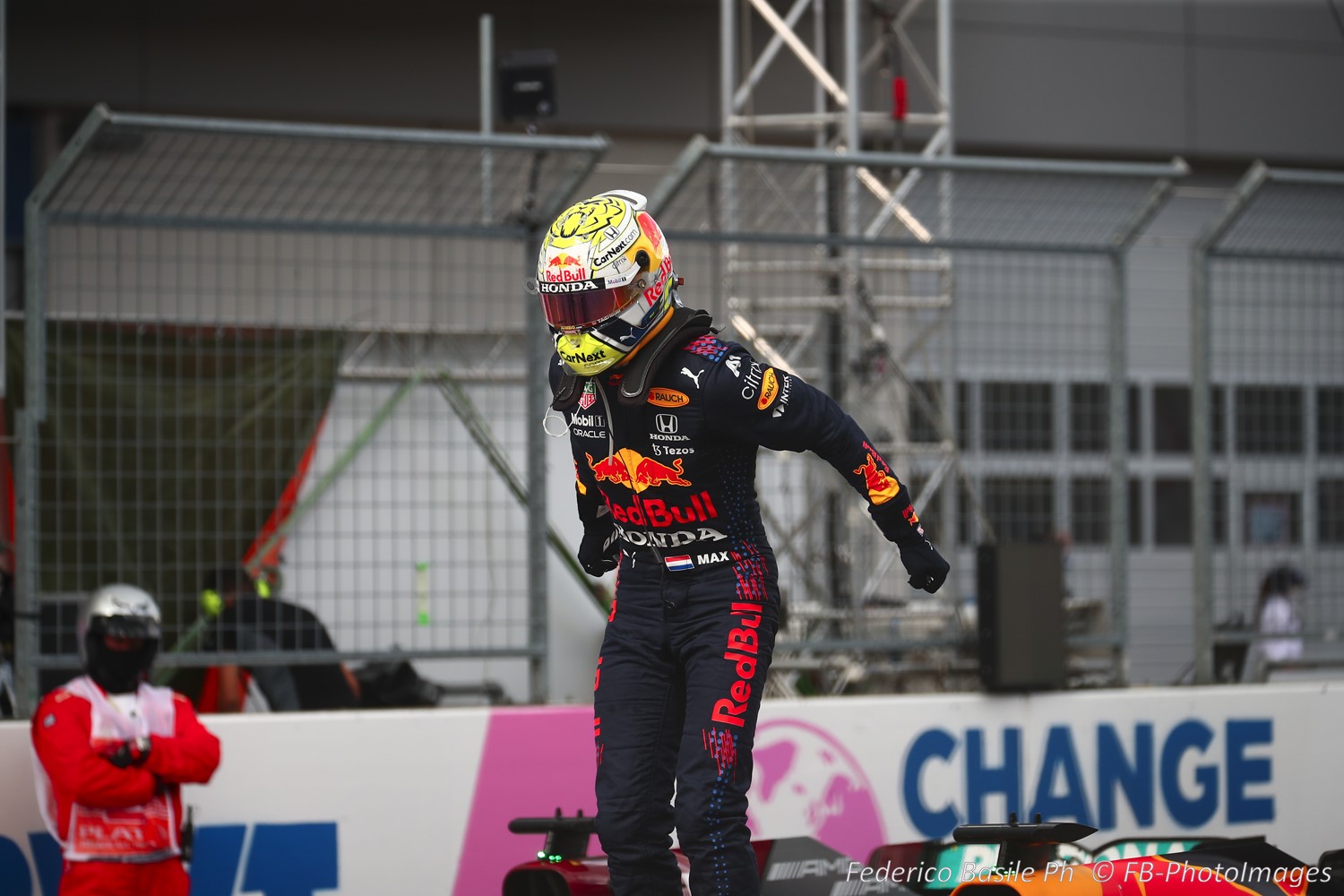
Sergio Perez on Austria
“Its going to be great to be back in Austria this week. It’s one of our home races and you feel that the minute you enter the circuit, the Team get incredible support there. I am looking forward to this weekend massively, I think it’s safe to say we’ll be the most supported Team and we want to give the fans something back.
“I’m coming off the back of a very pleasing result at the British GP, I always say never give up, and this was the case at Silverstone. We hadn’t had the best weekend up to that point with the car but in the end I managed to get on the podium and we all need to be proud of that.
“We’re set for another battle on track in Austria and I think all the drivers can say we’re having a lot of fun racing each other this season.”
Mario Isola on Pirelli Tires to be used
The asphalt at the Red Bull Ring offers reasonably low grip on a low-severity circuit, which makes it possible to bring the softest tires in the range. This helps us in putting the focus on entertainment, at a venue that has often delivered exciting races in the past, thanks to a busy and compact lap that’s essentially a series of short corners. Traction and especially braking are key here: with a particular risk of lock-ups in some of the tricky downhill braking areas. Maintaining the performance of the rear tires throughout the lap is also vital to ensure adequate traction. Our tire nomination makes a variety of different potential strategies possible.
